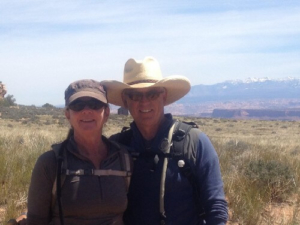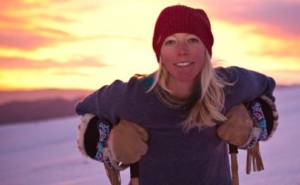Written by Audrey Wheeler
Across the U.S., our national parks and monuments are widely revered. In a 2017 poll of seven Western states, 80% of voters supported keeping protections for existing national monuments.
Since the days of President Theodore Roosevelt, presidents have had the authority to designate special places as national monuments. Between 1906 and today, sixteen presidents — Democrats and Republicans — have used this power to create new national monuments.
These monuments have protected some of our country’s most beloved places, from the Grand Canyon, which saw 6 million visitors last year and is now a national park, to the Statue of Liberty, which had 4.5 million visitorsin 2016.
However, this April President Trump issued an executive order to review 27 national monuments that were protected in the last two decades. The idea was that by conducting a “review” of these monuments, his administration could attempt to shrink or eliminate them. This could upend protections for millions of acres of public lands across the county.
In response, hundreds of thousands of people have submitted comments to the Department of the Interior, laden with examples of the economic, spiritual, psychological, and historical reasons for preserving our national monuments.
Here in Colorado, one of our national monuments is being scrutinized. Canyons of the Ancients National Monument was designated by President Bill Clinton in 2000, and has the highest density of archeological sites in the U.S. While it too has seen controversy, this area is now a well-loved and established destination in southwest Colorado. Since it became a national monument, the county has grown in population by 10 percent, alongside a boost in jobs, per-capita income, and personal income.

Archeological site in Canyons of the Ancients. Photo courtesy of BLM flickr.
From four people who value our public lands, here’s why you should care about Canyons of the Ancients (and should consider visiting it, too!):
MB McAfee, Lewis, CO
“I was born and raised in Cortez,” MB told me. “The area that is now Canyons of the Ancients was an area where we went hiking. McElmo Canyon that forms the southern boundary of the monument is called the ‘Banana Belt of Montezuma County’ because it has a warmer climate than the plateaus around it and it’s a place we picked apples and roamed in the canyons and found streams to fish in.”
She explained that, back in the 1940s and 1950s when she grew up in the area, the ancient archeology of the area wasn’t yet recognized. “As the years went by, it was discovered that there was indeed a treasure trove of archeological sites there.”
MB and her husband Chuck spent 32 years living in Loveland, Colorado, before returning to Cortez. Canyons of the Ancients, she says, “has been one part of the physical landscape and tapestry of my life…It’s a place where I went as a kid, and where I took my kids when they were little. Now that it’s revered as a monument, it’s kind of a blessing that the land I like down there — the sage, juniper, pinyon, canyon county — is now actually protected.”
She explained that when Canyons of the Ancients became a national monument in 2000, there were some locals who were opposed to it. People felt as though land that belonged to them was taken away. But not much changed in the ways people were able to use the land. MB said, “If people want to ride their ATVs there are trails they can ride, people can still graze their cattle…none of that changed when the monument was made.”
In fact, her husband was on the planning commission that made the first management plan for the national monument. “It was a large citizens group that included ranchers and farmers and water people too. It had to be a broad cross section of people who might use or be affected by the creation of the monument.”
Tom McNamara, Fruita, CO
Tom had just returned from a trip down the Grand Canyon when we spoke. He said his love for public lands goes back to when he was a kid growing up in Wisconsin. “My dad took me hunting a lot as a kid,” he explained, “So I would go out and sit in the woods and enjoy that of and by itself, without any frills or bells or anything.”

Tom, with wife Carrie, exploring public lands. Image courtesy of Tom McNamara.
“We moved out here almost 20 years ago,” he told me. From visiting the Canyons of the Ancients area, he remembers “absolutely extraordinary views, nothing like it.”
More recently, he visited Bears Ears National Monument, the newly designated area in Utah that is facing the most scrutiny of all the national monuments. As the crow flies, Bears Ears is only 30 miles from Canyons of the Ancients, and the two areas share a similar ancient history.
“We go [to the Bears Ears area] at least once a year, just because it is so unique, so different. You have a…spiritual experience, because you know people lived there so long ago. If it were trampled, or overused, the experience would be far different. It’s a prime area for anyone who wants to get away, to be among historic places, and to enjoy the quietude.”
“Does it need protection? Absolutely, we need to protect as much area as we possibly can. To go back to the Boundary Waters [of Minnesota, an area remembered from his childhood], it’s better today than it was fifty years ago. The fishing is still absolutely fabulous, and the experience overall is far better than it was because there are so many people who fought hard to preserve it. All of that is now sacrosanct because of a few people who were intelligent enough to protect that area.”
Annelise Loevlie, Golden, CO
Annelise is the CEO of Icelantic Skis. The following is adapted from her written comment to Secretary of the Interior, Ryan Zinke.

Annelise, in a photo from The Denver Post, 2013.
“Growing up in the mountains of Colorado, like these canyons I was formed and revealed by the wild, subtle and unrelenting forces of nature. My language and knowledge of the world comes in large part from early conversations with rocks, trees, clouds and deer. And it is through these interactions that I, like countless others, found myself. This, in my opinion, is one of the most valuable things a person can find, and a nation can ask for.”
“Why do these places exist? These Monuments exist because at some point, people were touched so deeply by them that they were declared sacred and voices called that they be forever protected by our national government.
“Numbers often speak louder than words, so I’ll explore what these places are worth. $887 billion is the number of dollars directly contributed to our national economy each year from the outdoor recreation industry. Here in Colorado, which is quickly becoming an industry leader, we are experiencing one of the more intense migrations I’ve ever seen. Droves of people are flocking to this state in search of those experiences and lessons I was lucky enough to grow up with.
“The value of a lunchtime bike ride is outweighing a venture-backed Silicon Valley salary. My peers are paying far more for new bikes than for cars and are craving time in wild places that provide freedom and inspiration. Subtle shifts such as these are all contributing to this striking number, an economy as large as the auto and pharmaceutical industries combined, employing more than computer technology, construction, or finance.
“I’m no expert on public policy, land management, or assessing economic value. However, I know that the more people come alive, the more prosperous we will be, and these places inspire life. These are not just plots of land. They are treasure troves of wisdom, freedom, inspiration and solace — and they must be protected.”
Gordon Bosworth, Boulder, UT
Gordon is a ranger who spent time working in Canyons of the Ancients. His home is on the border of Grand Staircase National Monument in Utah. The following is adapted from his written comment to the Department of Interior on protecting these national monuments.
“My ‘on the ground’ knowledge of both monuments is extensive. I have been a ranger for the BLM for five years and USFS for 24 seasons.

Visitors at the Escalante Pueblo in Canyons of the Ancients National Monument. Photo by Bob Wick, BLM.
“[For] Canyons of the Ancients, [we should] keep the current protection and administration of the monument — leave as is! It is a very big financial asset to the surrounding towns of Cortez, Mancos, Dolores, and Monticello, and the [Southern] Ute, Ute Mountain Ute, and Navajo nations. It is a very important protected piece of America.
“If the monument is minimized the damage to archeology and the understanding of our paleo past will be impossible to recreate. Tourism is a long-term plan for this area and it is what’s sustainable, not resource extraction.
“This monument is a museum, with new discoveries all the time. The uniqueness of this monument cannot be rebuilt if damaged by non-compatible resource-intensive industries.”
—
As these four people, and thousands more, can attest, protecting Canyons of the Ancients — and all of our national monuments — is the right thing to do. We must join together to stand up for our public lands, to keep them for future generations.
Cover photo: Canyons of the Ancients National Monument, photo by Bob Wick, BLM.








